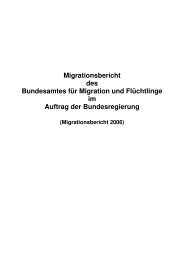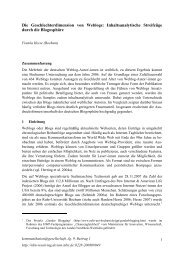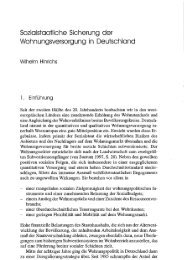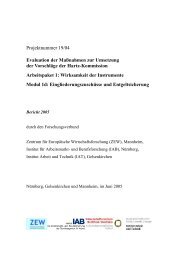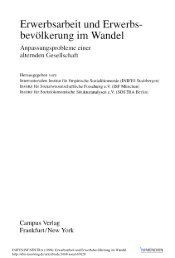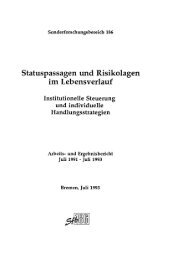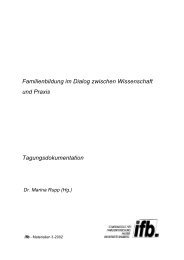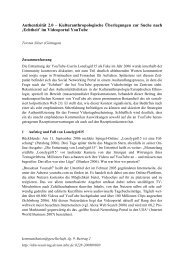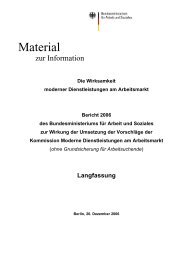Public Financial Management for PRSP - Deutsches Institut für ...
Public Financial Management for PRSP - Deutsches Institut für ...
Public Financial Management for PRSP - Deutsches Institut für ...
Create successful ePaper yourself
Turn your PDF publications into a flip-book with our unique Google optimized e-Paper software.
<strong>Public</strong> <strong>Financial</strong> <strong>Management</strong> <strong>for</strong> <strong>PRSP</strong> Implementation in Malawi<br />
sibilities among civil servants difficult and existing staff have to assume<br />
additional responsibilities and workload.<br />
Disturbance of regular working procedures and additional workload<br />
through donor-related activities and workshops<br />
Donor-related activities and workshops (see Chapter 6.3. and 6.2.) regularly<br />
disturb working procedures at central and local government level. There are<br />
many different donors in Malawi and their activities are not always well harmonised<br />
and aligned to Malawian procedures. In addition, hey frequently<br />
absorb public employees <strong>for</strong> meetings, workshops or administrative work.<br />
Different application, implementation and monitoring procedures and requirements<br />
<strong>for</strong> donor funds and projects cause additional workload <strong>for</strong> civil<br />
servants. This leads to time constraints <strong>for</strong> PFM related activities.<br />
6.2 Resources <strong>for</strong> PFM processes<br />
In a poverty-stricken country like Malawi, resource constraints are an omnipresent<br />
problem. The following section deals with different dimensions of<br />
resource constraints in the administrative bodies of Malawian government<br />
institutions and analyses their impact on PFM.<br />
As described in Section 5.1.2, Malawi operates a dual budgeting system with<br />
the national budget divided into a development budget and a recurrent<br />
budget. The civil service has to be financed out of the recurrent budget.<br />
While the development budget is about 80 % donor-financed, the recurrent<br />
budget incorporates much smaller proportions of donor funding and relies<br />
more heavily on national revenue. This implies serious problems at the level<br />
of financial management, as Malawi’s revenue base is extremely thin (significantly<br />
below 20 % of GDP). The economy relies heavily on agriculture,<br />
which accounts <strong>for</strong> 35 % of GDP and constitutes over 90 % of its exports.<br />
Export earning rely are dominated by one single commodity, tobacco, which<br />
accounts <strong>for</strong> 65 % of total exports. This makes Malawi’s export earnings and<br />
public revenue highly vulnerable to external shocks (IDD and Associates<br />
2005, 8). Together with extremely unpredictable donor funding as illustrated<br />
in Figure 7, this makes intra-year monetary planning extremely difficult (see<br />
Section 6.3.1).<br />
German Development <strong>Institut</strong>e 95




